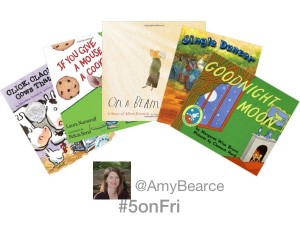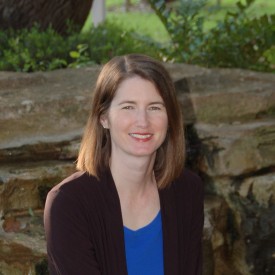When people consider writing for children, they often think about picture books first. You know the ones—the big ones found in the “E for Easy” section of the library with short text and illustrations. These days, librarians refer to this section as “E for Everyone” and with good reason. Everyone can enjoy a good picture book.
But writing one? That’s a different story. It’s definitely not easy.
Five Points to Consider if You’re New to the Picture Book Scene
- It’s an extremely tough market to break into. Which doesn’t mean you shouldn’t go for it—just be aware.
- If you are unpublished, it’s best to have at least 3-5 picture book (PB) manuscripts ready before you query an agent. If they like your manuscript, they will likely ask to see at least two or three others before signing you as a picture book author.
- The art is truly half the story. Pictures are on every page and are critical, not extra bonus material. In fact, sometimes including images that outright contradict the text are the crux of the humor (See This is Not My Hat, by Jon Klassen for a clever example.)
- As the author, you will likely never meet or talk to the illustrator. The publisher matches you up, and it’s hard to begin as a writer-illustrator unless you are very good at both.
- Go easy on visual descriptions, because the illustrator will take care of that. Don’t waste your precious word count. In 32 pages, you’ve got 500 words or less to tell a compelling story that holds up to repeated readings. You could stretch it to 800 or maybe 1000 tops, but those don’t sell as well.
Consider Nonfiction
Good news! Nonfiction picture books are a great way to break into the PB market. The Day-Glo Brothers (non-fiction) was Chris Barton’s first published book, but he followed it up with the successful and silly Shark vs. Train. He’s since published several more nonfiction picture books.
Teachers and librarians love well-researched and entertaining nonfiction picture books that give an overview of a topic in a concise way. Teachers often use books in the E section for science or history lessons. Need to study black holes? Boom—check out A Black Hole is Not a Hole, by Carolyn Cinami DeCristofano. Studying Fibonacci Numbers in math? Bam—The Rabbit Problem, by Emily Gravett, is right there center stage, playing best supporting actor in your nonfiction picture book line-up.
Understand the Market for Your Fiction
The education market isn’t cornered by nonfiction, either. Teachers also use fiction picture books to instruct about plot, character, mood, tone, theme, setting and more. This holds true even for older grades. As a 7th grade reading teacher, I used The True Story of the Three Little Pigs by Jon Scieszka to teach point of view and bias. The kids loved it. In fact, I used picture books all the time in my middle school reading and English classes, because they offered a compact but complete story to study in a 45 minute class.
Unlike books for adults, picture books must first appeal to a group of people beyond their primary audience: the parents, teachers, and librarians who buy books for children. But remember that while some adults like preachy books, kids don’t like them. Don’t talk down to your audience.
Avoid Rhyme
Unless you have a special gift
Rhyming words cause rejection: swift!
There are many reasons not to rhyme. Consider them carefully.
Show Me the Money? Maybe Not
New writers may not realize that picture book authors split their royalties with the illustrator, usually 50/50. And the Society of Children Book Writers and Illustrators (SCBWI) states that the illustrator usually gets a bigger percentage of the advance. If you are cool with that, awesome. If that bothers you, don’t write picture books unless you’re an amazing artist as well. If you write chapter books, middle grade, or YA, you won’t have that concern. Cover artists for novels are paid during development, not from royalties.
But regardless of payment, if you write for children in any form―picture books through YA―don’t expect tons of respect from adults. Many assume we write for children because it’s easier than writing for grown-ups. Some even think that anyone can write kidlit… until they try it for themselves! The truth is that all writing is challenging if you’re doing it right. But we do it because we love it.
Learn from the Best
 Read a lot of picture books, and study the great ones. Last Friday, I wrote a Five on Friday post about five fantastic picture books to check out, as well as a number of author/illustrators. You can check out that post here. One thing I found really enlightening was to take the text of my favorite picture book and type it out in prose form. Look at how just the text works, without the images, and how it differs as a reading experience. See for yourself how sparse and lean a picture book manuscript can be while still conveying a story. You can do this exercise with any picture book you love—the more the merrier.
Read a lot of picture books, and study the great ones. Last Friday, I wrote a Five on Friday post about five fantastic picture books to check out, as well as a number of author/illustrators. You can check out that post here. One thing I found really enlightening was to take the text of my favorite picture book and type it out in prose form. Look at how just the text works, without the images, and how it differs as a reading experience. See for yourself how sparse and lean a picture book manuscript can be while still conveying a story. You can do this exercise with any picture book you love—the more the merrier.
Join Other Picture Book Writers
Finally, whenever someone tells me they want to write for children, I suggest they join SCBWI and/or get plugged into their local chapter. I have learned so much from SCBWI conferences, critiques, and fellow writers. Plus, it’s fun to be around others who share the same passion as you do!
Now start writing! Bonus: Remember that November is PiBoIdMo—Picture Book Idea Month! Picture book writers can join in the fun of NaNoWriMo insanity! The registration closed Nov. 5, but you can still play along!
Do you have any favorite picture books you still remember from your childhood or from your children’s childhood? I’d love to hear about them!
**Full disclosure: Though not a picture book author myself–which should be clear from the length of this post–I have studied writing for children via conferences, books, classes, and seminars. Picture book writing is a hot topic in all of those forums. But as it turns out, everything I write comes out best suited for tweens and teens. So that’s what I do—and I love it!
 Amy holds a Masters of Library Science along with a certification in school librarianship. She is a former reading and English teacher, mostly for 6th-8th graders. Her debut book, FAIRY KEEPER, is an upper-middle-grade fantasy, now available from Curiosity Quills Press. She currently lives in Germany with her family, though they still call Texas home. Her daughters are 9 and 11 years old. As you might imagine, middle grade books are a hot commodity around their house.
Amy holds a Masters of Library Science along with a certification in school librarianship. She is a former reading and English teacher, mostly for 6th-8th graders. Her debut book, FAIRY KEEPER, is an upper-middle-grade fantasy, now available from Curiosity Quills Press. She currently lives in Germany with her family, though they still call Texas home. Her daughters are 9 and 11 years old. As you might imagine, middle grade books are a hot commodity around their house.
Amy‘s next book, MER-CHARMER, will be released May 9, 2016.







